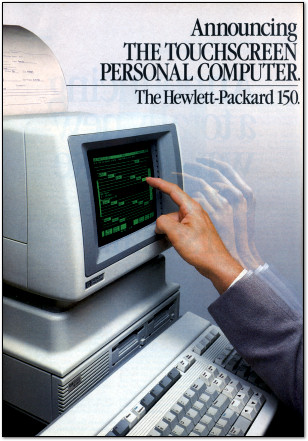In 1983, Hewlett-Packard released what may have been the world’s fist personal computer with an integrated touch-screen. The HP-150 was an 8088-based MS-DOS compatible PC with a handful of advanced features for its time. Unfortunately, the 150’s hardware architecture proved so different that it was not compatible with most IBM PC programs.
The HP-150 uses a crude, low-resolution method for detecting finger placement on its display. The unit projects a grid of infrared beams across the surface of the screen. By sensing which beams are obstructed by an object, the computer can calculate the coordinates of the touch.
Aside from the touch-screen, The HP-150 is notable for being the first U.S. computer to use Sony’s 3 1/2-inch “micro-floppy” disk format, as well as support for Ethernet networking, hard disks, and HP’s first LaserJet printer (through an HP-IB interface). Not bad for 1983.
Anybody have one of these that they don’t want anymore? I’d love to add one to my collection.
[ From Personal Computing, December 1983 ]
If you use this image on your site, please support “Retro Scan of the Week” by giving us obvious credit for the original scan and entry. Thanks.




 Keyboards, keyboards everywhere, but not a drop to drink. How many different computer keyboards have you used in your lifetime? Do you remember the good ones? The bad ones? By golly, I’ve known quite a few.
Keyboards, keyboards everywhere, but not a drop to drink. How many different computer keyboards have you used in your lifetime? Do you remember the good ones? The bad ones? By golly, I’ve known quite a few.

















